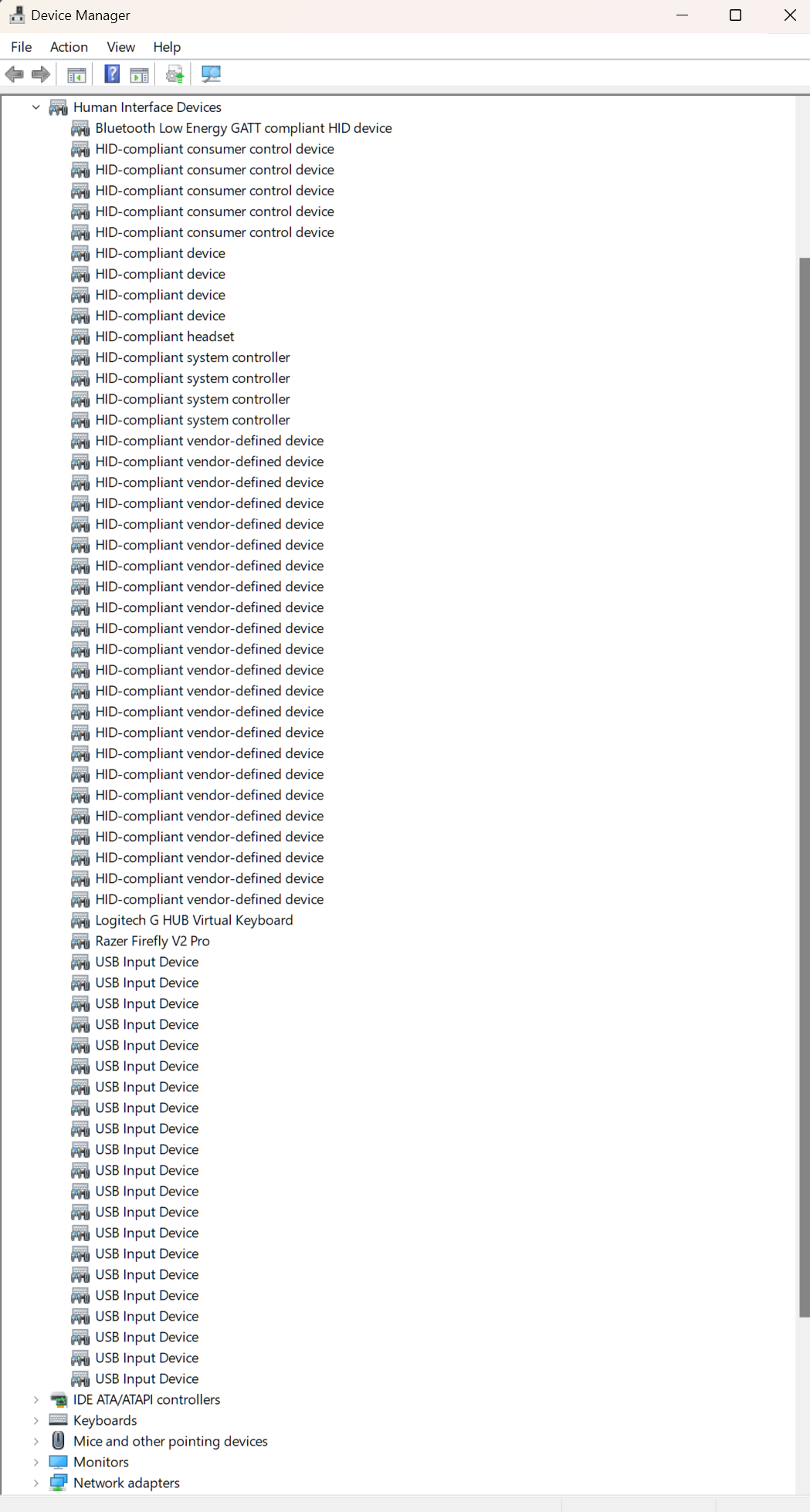Thank you, Freeware: I was just saved from USB disconnect/reconnect hell by a simple logging tool
God bless USBLogView.


This week I've been: sweltering in the heat with the PCG testbench running alongside my regular gaming PC to test some new products.
Last week I was: trying out AMD's latest Strix Point chip inside the Zephyrus G16. An extremely impressive combination!
Biddum. Biddee. Biddum. Biddee. "So, as I was say—" Biddum. Biddee. Biddum. Biddee. Biddum. Biddee. Biddum. "Sorry, my PC is having a meltdown." Biddum. Biddee. Biddum. "This is infuriating." Biddum. Biddee. Biddum. "Forget it."
This was me only yesterday, when I was caught out trying to talk to my fellow PCG hardwarers in a Google Meet. Every second my PC was playing a sound to notify me that a USB device was connected, and then another sound that it was disconnected. And then connected again. And then disconnected again. Then connected. Then disconnected.
For three hours I was trapped inside this hellish cycle of Windows f***ery.
Biddum. Biddee.
First, I trudged through Windows Event Viewer to see if I could find some log of which device might be causing the issue. No dice. Event Viewer doesn't offer a clear picture of USB connections and if and when they're connected/disconnected. You'd think it would do that, but if it does, I couldn't see it.
Then onwards to Device Manager to see if I could physically catch the perpetrator in the act. This was a bit of a long shot—I've been here before—it's tough to keep track of which USB device is coming and going.
Device Manager flashes blank every time a device is connected or disconnected, which means it's partially a memory game to remember what was once there and has since disappeared. Considering none of the named USB devices were going anywhere as I watched on intently, that meant it was one of the devices with a generic title, such as 'Human Interface Device' or 'USB Input Device'. Of which, I have many.
The biggest gaming news, reviews and hardware deals
Keep up to date with the most important stories and the best deals, as picked by the PC Gamer team.

Biddum. Biddee.
Through which I proceeded to remove every USB device from my PC, one by one. That's sure to weed out the nasty little culprit. I'd pull a cord, wait, see if the sound starts up again, and if it did, plug the cable back in again. Twenty minutes later and the sound didn't cease for more than a second. It wasn't any of my external USB devices that caused the issue. S**t.
Biddum. Biddee.
Is my Windows 11 installation b0rked beyond repair? I started to believe this to be the case, and the internet—in its infinite wisdom and troubleshooting expertise—told me that may be the case. So, I tried a registry edit as per some advice online. I patiently wait for my machine to reboot with the change in place and…
BIDDUM. BIDDEE.
"I can't take it anymore!" I say, as I rip my f***ing headphones off.
The sound went on like this for around three hours, which for the most part saw me holding my head in my hands.
I did, however, discover the root cause of the issue eventually. And it was all thanks to a little app called USBLogView.
After talking to the PC Gamer Hardware team about my issue in no uncertain language (I'm not usually one to swear but this experience f***ing sucked). I was told by our Nick Evanson that there was some app that might be able to show me which device was disconnecting and reconnecting each time. He couldn't remember the name, but I forgive him, as the mere knowledge of 'an app that shows me which USB device is connected/disconnected' was search term enough to bring up said app in Google Search.
USBLogView is a simple piece of freeware uploaded to a simple website seemingly running on a server untouched from the early 2000s. I'm not judging it on looks: I find most websites that look like this offer the best solution to whatever problem I'm having at the time. I might have been a little more cautious as to installing this application from a mysterious website had it not been for the biddum and biddee I knew was still going off, whether I could still hear it or not.

So, I loaded up USBLogView, and waited patient—oh, there it is. Mysterious Human Interface Device with Vendor ID '1b1c'. I search around for a good database of vendor IDs, stumble across devicehunt.com, and find that it's all Corsair's fault.
No, it's not. It was a Corsair device. The device in question is a fan controller inside my Corsair 5000T clad PC. I know this because as soon as I open the side panel on my PC and ensure the USB header connections are firmly in place, the notifications go away. One of the connections was loose and it's probably my pristine cable management tugging on each cable that's actually to blame. Damn these organised hands.
The issue hasn't come back since. Phew.

Jacob earned his first byline writing for his own tech blog. From there, he graduated to professionally breaking things as hardware writer at PCGamesN, and would go on to run the team as hardware editor. He joined PC Gamer's top staff as senior hardware editor before becoming managing editor of the hardware team, and you'll now find him reporting on the latest developments in the technology and gaming industries and testing the newest PC components.

